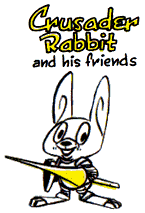

Since we again have discussion leaders, I'll just indicate some basic ideas you should look for in your reading. You've probably already noted that this is more complex reading that the previous texts, but it's a very recent collection of essays and should move us nicely into contemporary animation.
Prime Time Animation: An Overview
As you read, you should recognize most of the names and styles of cinematic animation; it seems especially interesting to see McCay as the transitional figure between the early animator-inventors and the industrial model of animation production that followed. How do the authors see Bevis and Butthead as a critique of contemporary media-centered society in the US? What's the relationship between The Simpsons and the domestic sitcom as defined by the television of the 1950s and 1960s? What's your response to this reading of contemporary prime time network animation?
"Smarter
than the Average Art Form": Animation in the Television Era
How successfully does Wells "challenge the prevailing argument that this move toward reduced animation was to the detriment of animation as an art form"? As a viewer of Saturday morning cartoons (I assume) at some point in your life, what do you think of Chuck Jones' and Leonard Maltin's assessment of those programs? What are these critics (and others) objecting to here? What factors in television technology and scheduling in the 1950s demanded a new animation aesthetic? Joe Oriolo, producer of the 1950s Felix the Cat cartoons, stipulated that scenes that could fit under his office door had too many drawings; what did he mean by this? What are the differences between the UPA stylized animation and the Hanna Barbara reduced animation? What made the early Hanna Barbara animation so attractive to adults? Why did children also like it? The final sections of this essay focus on "recombinancy" as a central feature of American television, a term defined by Todd Gitlin as "the recombination of elements of previously successful shows." How was The Simpsons an example of recombinancy? How many different forms is Wells able to find in recombination in the Saturday morning cartoon shows through the years? Wells then defines recombinancy more generally as "the recirculation of materials and cultural resources which already enjoyed favorable dissemination and market acceptance." How closely does this definition describe almost all of American popular culture? How much invention do we actually see in movies, television, novels and video games?
The Great Saturday Morning Exile: Scheduling Cartoons on Television's Periphery in the 1960s

In language much clearer that Wells', Mittell is describing the same general movement in animation from its original (theatrical) kidult audience to one defined completely by the term kidvid, focusing less on aesthetic factors than on economic ones. How does he relate this movement to changes in the Hollywood film industry? How were cartoons originally programmed on early television? When were they generally shown? What kind of cartoons didn't make it to television? How did this censorship change the way Americans perceived animation? We tend to think of toy companies as almost synonymous with children's cartoons; how did this link occur? What two or three assumptions about children's viewing does Mittell claim to be almost universal with network executives in the 1950s and 1960s? Do you think the same assumptions now determine what is shown on Saturday morning television? Why did early television critics see Hanna Barbara's and Jay Ward's early tv animations as groundbreaking? Why did the first prime time animation made for television, The Flintstones, rather ironically drive all animation from prime time for about 30 years? What do we mean by the phrase "innovation--imitation--saturation"? What made the move to Saturday morning tv especially attractive to advertisers? What impact, in turn, did this move have on the cartoons shown then?